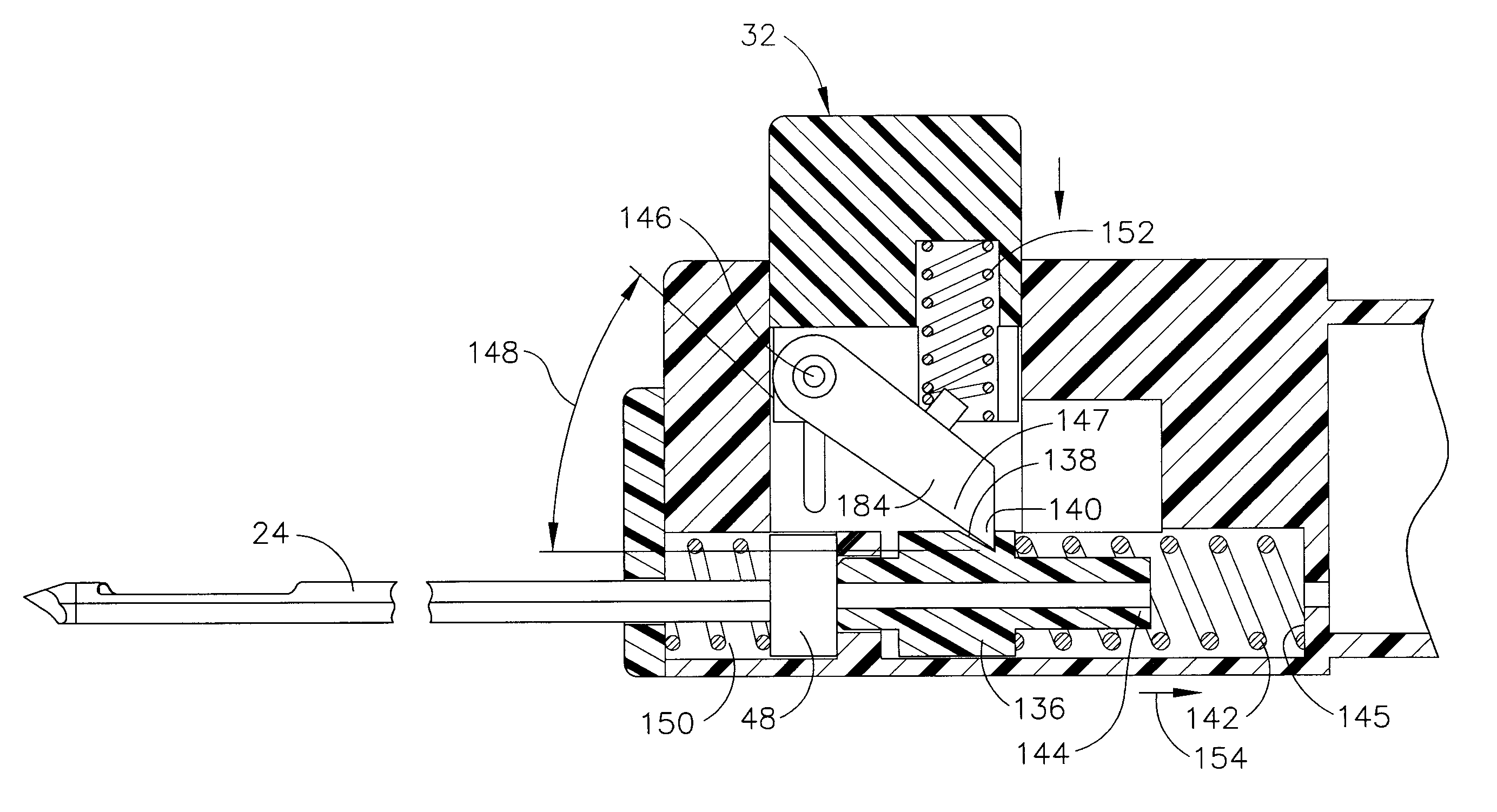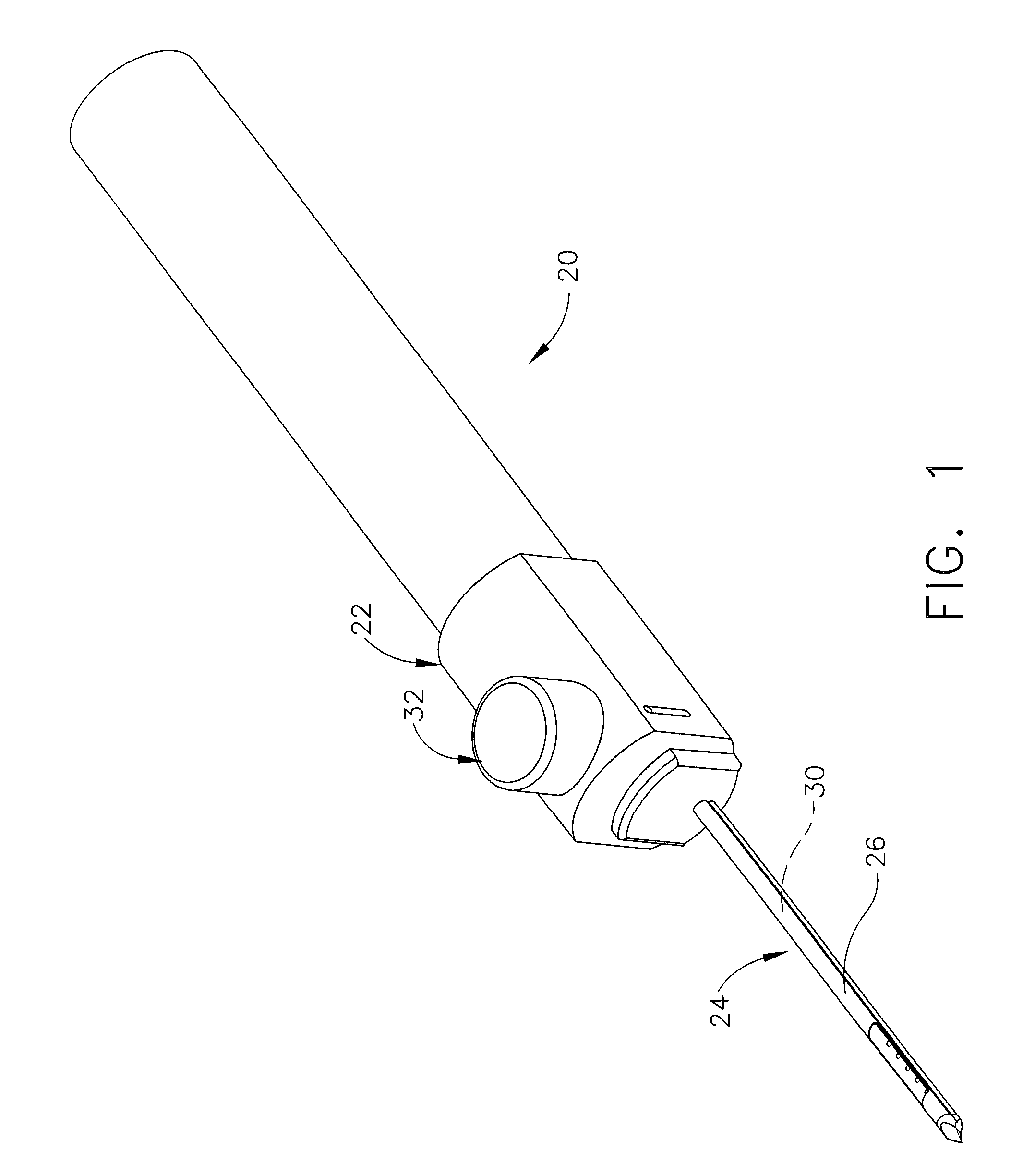Biopsy instrument with improved needle penetration
a biopsy instrument and needle technology, applied in the field of hand-held biopsy instruments, can solve the problems of high patient cost and high trauma level, open biopsy carries a relatively higher risk of infection and bleeding, and is difficult to read future mammograms
- Summary
- Abstract
- Description
- Claims
- Application Information
AI Technical Summary
Benefits of technology
Problems solved by technology
Method used
Image
Examples
Embodiment Construction
[0051]The present invention pertains to a core needle biopsy device and, more particularly, to reducing the necessary manual force that must be applied by a surgeon to penetrate tissue and / or lesions with the needle of a biopsy instrument. Accordingly, the present invention provides a device for reducing the required force to penetrate tissue and / or lesions during a biopsy procedure. In particular, the invention provides for one or more short, controlled impulses by a biopsy needle to assist in advancing the needle through dense or hardened tissue. The short, controlled movements enabled by the present invention provide for improved needle position control and tracking, particularly adjacent to the chest wall. In one version, the invention may allow the surgeon to actuate short impulses of the needle independently of a separate cutter, which may be advanced after the needle has been positioned adjacent the suspicious tissue. The firing mechanism allowing the surgeon to produce contr...
PUM
 Login to View More
Login to View More Abstract
Description
Claims
Application Information
 Login to View More
Login to View More - R&D
- Intellectual Property
- Life Sciences
- Materials
- Tech Scout
- Unparalleled Data Quality
- Higher Quality Content
- 60% Fewer Hallucinations
Browse by: Latest US Patents, China's latest patents, Technical Efficacy Thesaurus, Application Domain, Technology Topic, Popular Technical Reports.
© 2025 PatSnap. All rights reserved.Legal|Privacy policy|Modern Slavery Act Transparency Statement|Sitemap|About US| Contact US: help@patsnap.com



